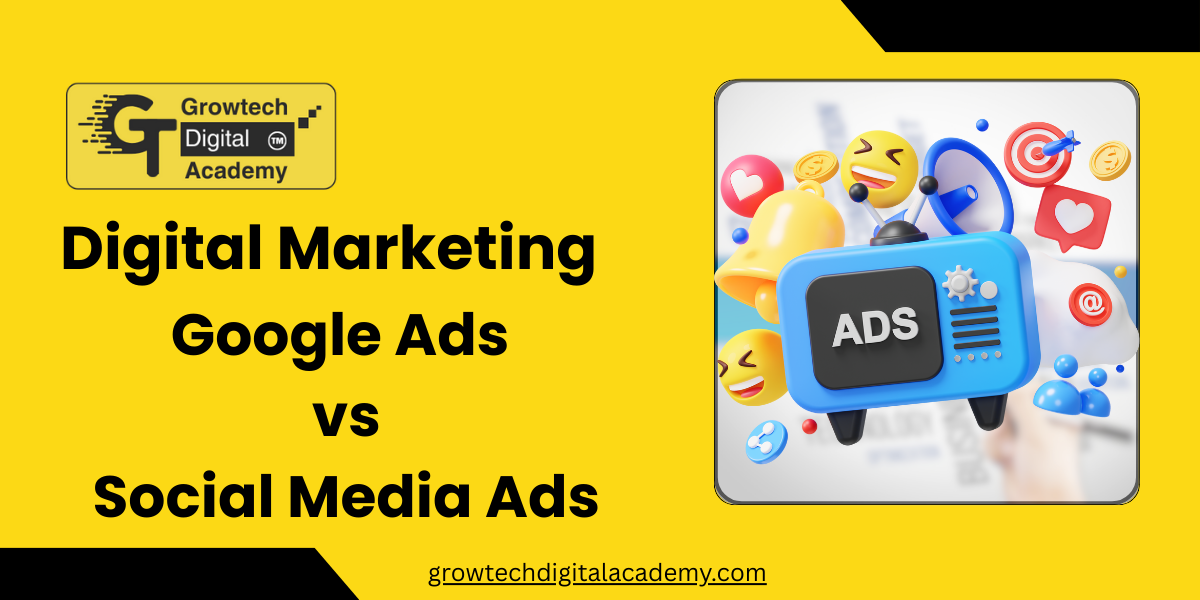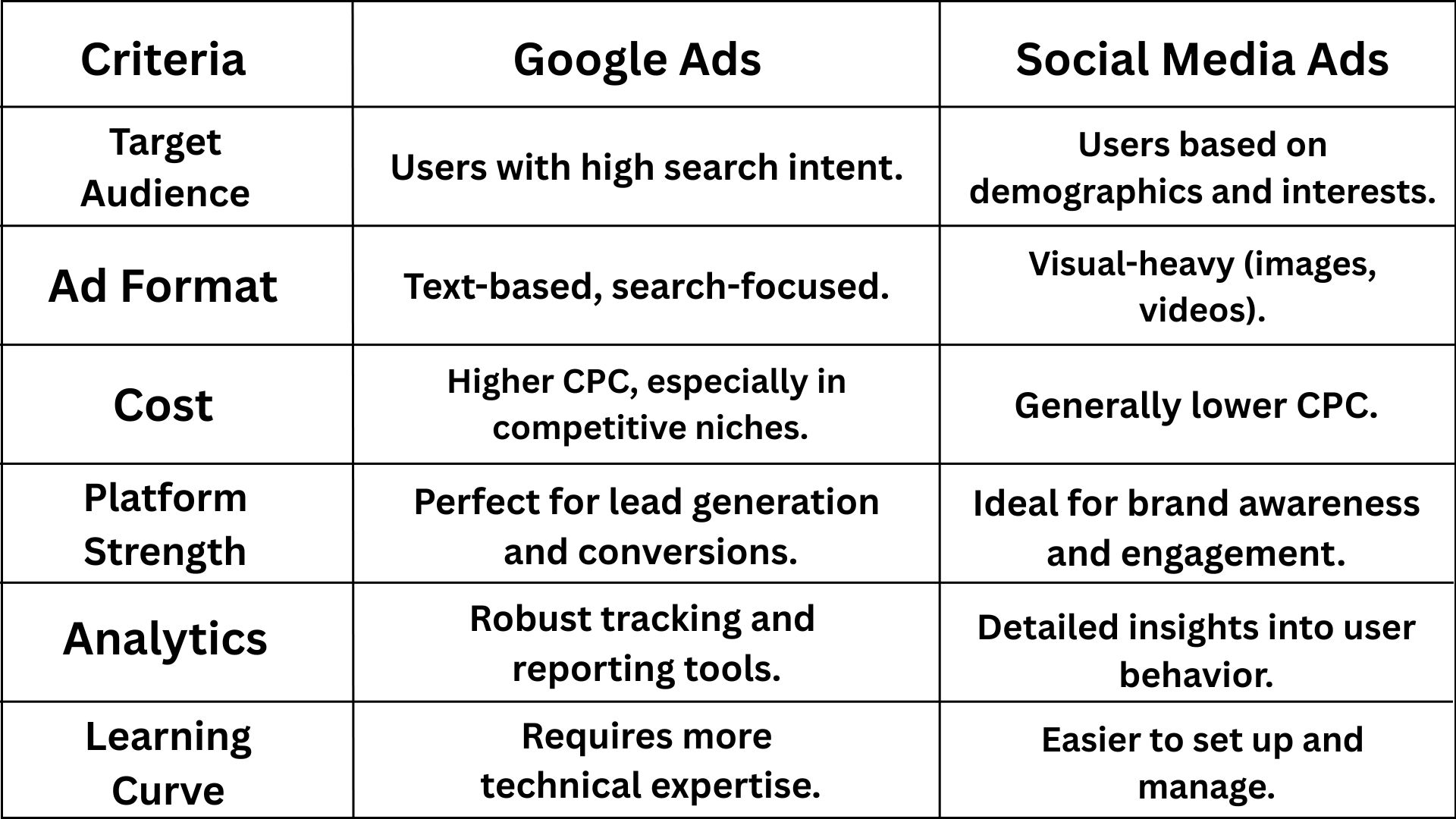Introduction:
Ah, the eternal debate: Google Ads vs Social Media Ads. If you’re a business owner or a marketer, this question has probably crossed your mind at least once. Both platforms are marketing powerhouses, but they cater to different strategies, audiences, and goals. Choosing the right one can be overwhelming, especially when you’re juggling budgets and timelines.
In this article, we’ll break down Google Ads and Social Media Ads, exploring their strengths, weaknesses, and ideal use cases. By the end, you’ll have a crystal-clear idea of which one aligns with your business objectives.
Google Ads vs Social Media Ads: Understanding the Basics
What Are Google Ads?
Google Ads (formerly AdWords) are pay-per-click (PPC) advertisements displayed on Google’s search engine results page (SERP), YouTube, and partner websites. They’re keyword-focused and target users actively searching for specific products, services, or information.
What Are Social Media Ads?
Social Media Ads are paid advertisements displayed on platforms like Facebook, Instagram, LinkedIn, Twitter, and TikTok. These ads target users based on demographics, interests, behaviors, and social activity, often interrupting their scrolling rather than meeting an active intent.
The Pros and Cons of Google Ads
Pros:
- Search Intent: Google Ads target users who are actively searching for something, making them ideal for bottom-of-the-funnel conversions.
- Wide Reach: With over 8.5 billion searches daily, there’s no shortage of potential customers on Google.
- Custom Targeting: You can target by keywords, location, device, and even the time of day.
- Measurable ROI: Google Ads provide detailed analytics, helping you track conversions and fine-tune campaigns.
Cons:
- Costly Clicks: Competitive industries can drive up the cost-per-click (CPC).
- Steeper Learning Curve: Google Ads require a solid understanding of keyword research, bidding, and campaign structuring.
- Limited Visual Appeal: Unlike social media platforms, Google Ads aren’t as visually engaging.
The Pros and Cons of Social Media Ads
Pros:
- Highly Visual: Platforms like Instagram and Pinterest thrive on eye-catching visuals, perfect for showcasing creative products or services.
- Precise Targeting: Social media algorithms allow you to target specific audiences based on age, gender, location, interests, and even life events.
- Brand Awareness: Great for building brand recognition and fostering engagement.
- Cost-Effective: Lower CPC compared to Google Ads, making it ideal for small businesses on a tight budget.
Cons:
- Interruptive Nature: Social Media Ads often disrupt users’ browsing experience, which can lead to ad fatigue.
- Shorter Attention Span: Users tend to scroll quickly, so your ad needs to grab attention instantly.
- Lower Purchase Intent: Unlike Google Ads, users on social media are not actively searching for your product or service.
Google Ads vs Social Media Ads: Key Differences
Here’s a side-by-side comparison to make things clearer:

When to Choose Google Ads
Google Ads might be your best bet if:
- You’re targeting customers who are actively searching for your product or service.
- Your business relies on high-intent keywords (e.g., “buy running shoes online”).
- You’re in a competitive market and need measurable ROI for every dollar spent.
- You want to capture leads or drive conversions quickly.
When to Choose Social Media Ads
Social Media Ads are ideal if:
- You’re looking to build brand awareness or foster long-term customer engagement.
- Your product or service has strong visual appeal (think fashion, food, or fitness).
- You’re targeting a specific demographic or niche audience.
- You want to experiment with creative ad formats like stories, reels, or carousel ads.
Google Ads vs Social Media Ads: Can You Use Both?
Absolutely! In fact, combining both strategies can create a powerhouse marketing funnel. For example:
- Use Google Ads to capture high-intent leads and drive immediate conversions.
- Use Social Media Ads to nurture those leads, build trust, and encourage repeat purchases.
Integrating both platforms ensures you’re covering all stages of the buyer’s journey—from awareness to consideration to decision-making.
